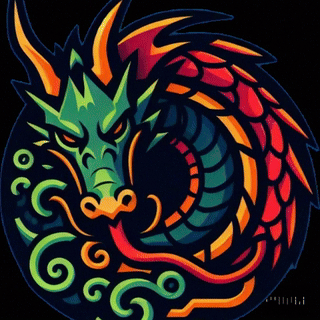Alright, let’s soar into Part 6, because now it’s time for Horus—the falcon-headed warrior, the divine avenger, and the symbol of kingship itself. If Set was the storm, Horus is the sky after the storm, vast and powerful, with eyes that see everything.
Part 6: Horus – The Avenger and Sky God
So let’s rewind a bit. You’ve got Osiris, the great king, murdered by his own brother, Set. Isis, the queen of magic, performs miracles to bring him back just long enough to have a child—Horus. And then? She disappears into the marshes of the Nile, hiding her baby from the world.
This kid wasn’t just any baby. He was destiny wrapped in feathers and divine power. From the moment he took his first breath, Horus had a purpose: to grow strong enough to avenge his father, take back the throne, and restore balance to Egypt.
Raised in the Reeds
Let’s paint the scene.
Imagine a hidden corner of the Nile Delta. Thick papyrus reeds sway in the warm breeze. The hum of insects buzzes in the air. In the shadows of this wild, swampy land, a young god is growing up in secret.
Isis, ever-watchful, nurses and nurtures her son while keeping him hidden from Set’s gaze. She’s constantly on the move, evading threats. There are versions of the myth where baby Horus is poisoned by a scorpion, or nearly taken by evil spirits. But each time, Isis calls on her magic—sometimes even the gods themselves—to bring him back from the brink.
Horus isn’t just being kept safe. He’s being prepared. Every moment in hiding makes him stronger. He’s learning. Watching. Waiting. Until one day, he’s ready.
The War for the Throne
And then? Horus steps into the sunlight, fully grown and ready to reclaim what’s his. What follows is one of the most dramatic sagas in Egyptian mythology—the clash between Horus and Set.
This wasn’t just a quick swordfight. Oh no. Their conflict is told across multiple stories, each one more epic—and honestly, more weird—than the last.
There’s a version where they compete in a series of contests before the gods. Think of it like a divine courtroom showdown mixed with a supernatural Olympics. From boat races to transformation battles, Set keeps trying to cheat or twist the rules, and Horus keeps pushing back.
And then there’s the… let’s say “mature content” version. Without getting too graphic, it involves an uncomfortable magical prank war, some bodily fluids, and a magical lettuce salad. Yep, ancient Egyptian mythology really went there. But the point was always the same—Set was trying to humiliate Horus and prove himself stronger, and Horus had to outsmart him, not just overpower him.
Horus Loses an Eye (But Gains a Legacy)
One of the most famous moments in the whole saga? The battle where Set gouges out Horus’s eye. It’s brutal. It’s raw. But it’s not the end.
Horus’s eye—later known as the Eye of Horus, or Wedjat—gets magically restored by Thoth, the god of wisdom. And from that moment, the Eye of Horus becomes a sacred symbol across all of Egypt. It represents healing, protection, wholeness, and restoration.
People wore it as amulets, carved it into tomb walls, and painted it on coffins to ward off evil. It wasn’t just a reminder of Horus’s pain—it was a symbol that wounds can heal, and strength can return.
It also speaks to Horus’s dual nature. He wasn’t just a warrior. He was someone who had lost, who had suffered. And yet, he came back stronger. The kind of leader who knew pain and could still stand tall.
The Falcon Soars
Eventually, Horus wins. The gods, after ages of conflict, side with him. Ma’at is restored. Set is defeated—though not always destroyed, as we saw in the last chapter.
And Horus? He becomes the rightful king of the gods. But more than that—he becomes the template for every pharaoh to come.
See, to the ancient Egyptians, the pharaoh wasn’t just ruling in Horus’s name. He was Horus. Living pharaohs were seen as the earthly form of Horus, while deceased pharaohs merged with Osiris in the afterlife. This beautiful, continuous loop tied kingship to the divine cycle of life, death, and rebirth.
Horus’s role wasn’t just mythological—it was political, spiritual, and national. His presence legitimated rule, inspired art and architecture, and gave the Egyptian people a god they could relate to—someone who fought, fell, and rose again.
Symbols of Horus
You can’t miss Horus in ancient art. He’s almost always shown as a falcon, or a man with the head of a falcon, wearing the double crown of Egypt—symbolizing his rule over both Upper and Lower Egypt.
The Eye of Horus, of course, is his most famous symbol. It was used in jewelry, medicine, and even navigation. The left eye, specifically, was associated with the moon, while his right eye symbolized the sun. Balance again.
Some depictions also show him with wings, spreading protection over kings and commoners alike.
Horus in the Human Heart
More than anything, Horus represents hope.
He’s the embodiment of the idea that no matter how dark things get, you can rise again. That your scars can become your strength. That justice might take time, but it will come. That the child of tragedy can grow into a protector of the people.
So, when you see a falcon soaring high in a cloudless sky, think of Horus—sky god, avenger, protector, and king. The one who reclaimed his legacy and taught the world that light can follow the storm.
Next up: Chapter 7: Anubis – Guardian of the Dead, where we step quietly into the world of tombs, mummies, and sacred passageways to meet the jackal-headed god who watches over the dead with calm eyes and a steady hand.🖤
480-366-3550 (Domain Sales)
© SDBEST LLC, 2025. All rights reserved.
Sponsorship Disclosure
Terms of Service
